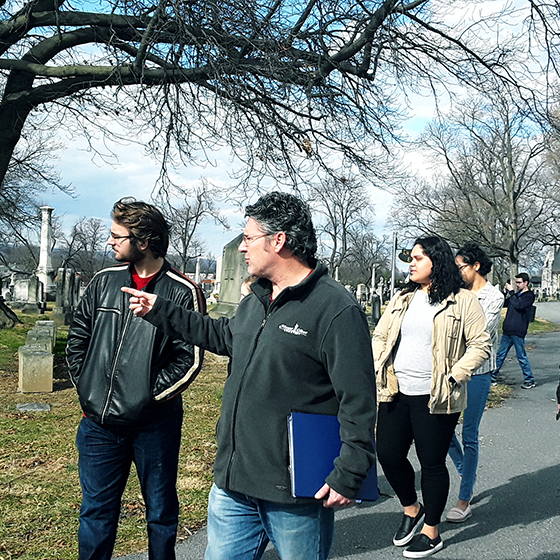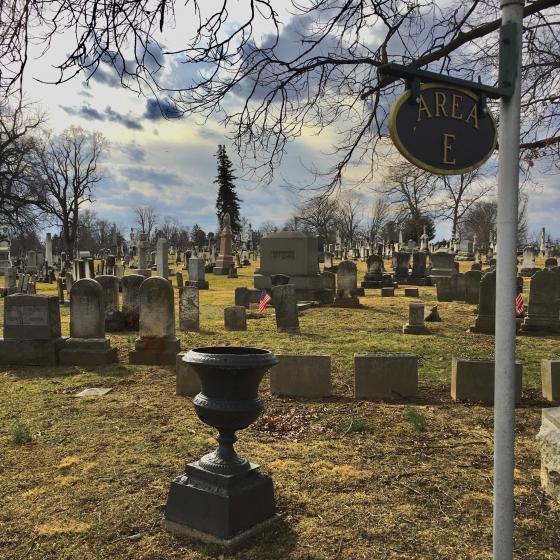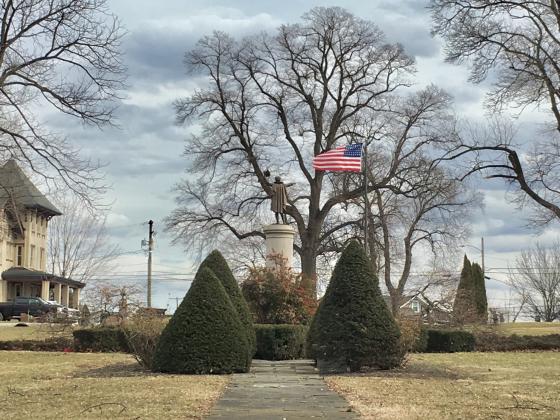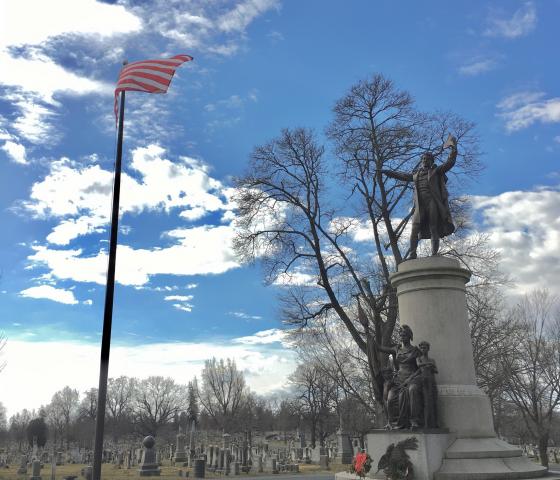Field Trip to Mount Olivet Cemetery

A Spanish class field trip to Mount Olivet Cemetery explored how Frederick deals with memory and history compared to Spain.
Field Trip to Mount Olivet Cemetery
Department
- Global Languages & Cultures
In February, I went to Mount Olivet Cemetery with a group of students in the SPAN 397 “Lugares de memoria en la España contemporánea/Sites of Memory in Contemporary Spain” course, taught by Dr. Robert Casas. We learned about how Frederick deals with memory, history and commemoration, establishing comparisons with Spain and the readings/documentaries we are discussing in class.
We learned how each tombstone represented a story of someone who had passed on. The tombstone itself acted as a tangible substitute for the deceased person in that its presence preserved the memory of the person. When someone visits a tombstone of someone they once knew, they do not just think of a stone. Instead, all of their fond memories with the loved one come rushing back as if the person was standing in front of them once again. This concept connects with a quote that Chris Haugh, our tour guide (pictured above), mentioned. It’s that everybody has two deaths: one when our body dies, and another when the memory of us dies. Tombstones allow us to preserve ours and others’ memories. The statue of Francis Scott Key in Mount Olivet does this by associating his image with the man who wrote our nation’s national anthem.
Finally, one major takeaway from the trip was that we noticed how the land of the living and the dead are related. The land of the living resides in cities, towns, villages, etc. The dead are buried in close proximity together in cemeteries. Therefore, this shows that the major connection and similarity between the living and the dead is that, as human beings, we are never alone.
Mount Olivet Cemetery




Are you ready to say Hello?
Choose a Pathway
Information will vary based on program level. Select a path to find the information you're looking for!
